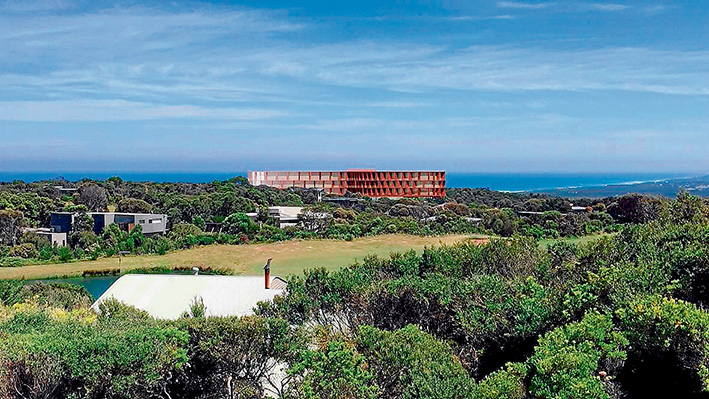THE RACV has wasted little time getting into gear to start its $135 million resort at Cape Schanck.
The possibility of a legal challenge of Mornington Peninsula Shire Council’s approval now appears unlikely.
The controversial project was approved by just four councillors on 13 July. The council was reduced from 11 to seven councillors with three absent (Tim Wood, whose ward covers the resort, Lynn Bowden and Hugh Fraser) and one declaring a conflict of interest and leaving the council chamber, Graham Pittock (who has shares in the National Golf Club, which adjoins the RACV property).
Four councillors voted for the project and three against. Voting on the resort planning application had been delayed twice since May with councillors who belong to the RACV Club worried about conflict of interest. The council sought a ruling from local government minister Natalie Hutchins but she told them to get their own legal advice.
The RACV late last month invited so-called second tier builders to tender for the project. Several companies have already asked sub-contractors to submit prices for various element of the job before the end of August.
The company that built the RACV’s Torquay resort, Kane Construction, has been invited to tender for the Cape Schanck job. Kane has its own work gang.
Both Cape Schanck and Torquay resorts have been designed by the so-called rock star architects Roger Wood and Randal Marsh of the Melbourne firm Wood Marsh, award-winning architects to the rich and famous.
The company was recently commended for its Torquay design by the Australian Institute of Architects.
The Torquay resort cost $115 million. It has 92 rooms, conference and gaming areas, and underground car parking. It was also controversial and remains so after recent claims about land and water use.
An article in a recent edition of the RACV’s magazine stated the Torquay resort had views of Cape Schanck, which prompted one wit at the council meeting last month to suggest the two resorts could signal each other.
Last month during debate about the resort, councillors and residents in the public gallery were told by shire planner Arthur Cooksley the resort would create 476 full-time jobs during construction, with up to 120 full-time jobs after completion. “It will provide an annual economic impact of $11.7 million and support an additional 93 jobs in the shire,” he said.
Hopes by some supporters of the project that many of the construction jobs could be taken by peninsula residents are unlikely to be fulfilled.
Objectors said the proposed resort was too high at 30 metres and would change the coastal village nature of Cape Schanck. They were also concerned about increased traffic, noise, light and overshadowing.
Tourism interests supported the project, stating it would bring conference visitors to the peninsula during the off-season, which the peninsula’s tourism board has been promoting in recent times. The peninsula is almost at and sometimes over capacity during the summer peak with the permanent population swelling from 150,000 to as high as 250,000.
Since the resort was approved, objectors have vowed to push the RACV to stick to and even improve its traffic management plan both during and after construction. “It’s the state’s peak motoring body and promotes road safety so it is reasonable to expect traffic management would be of the highest standard,” one resident said.
First published in the Southern Peninsula News – 11 August 2015


